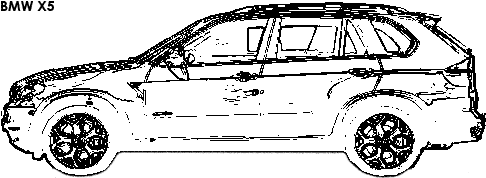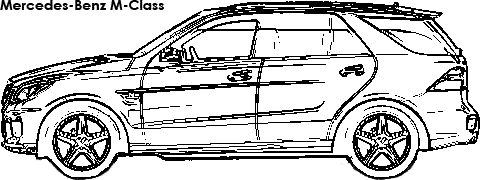BMW X5 vs Mercedes-Benz M-Class
September 15, 2023
Compare BMW X5 vs Mercedes-Benz M-Class (1:1)


The BMW X5 and the Mercedes-Benz M-Class (now known as the Mercedes-Benz GLE) are two luxury SUVs that have been competitors in the premium SUV segment for many years, offering a combination of performance, comfort, and advanced features.
In terms of performance, both vehicles offer a range of powerful engine options to suit various driving preferences. The BMW X5 typically features a lineup of robust turbocharged engines that provide impressive acceleration and agile handling. BMW's reputation for performance shines through in the X5's precise steering and well-balanced chassis. The Mercedes-Benz M-Class (GLE), on the other hand, offers capable performance with a focus on smoothness and comfort. It features a range of V6 and V8 engines that deliver a refined and composed driving experience, making it well-suited for long-distance cruising and family trips.
Interior quality and technology are pivotal in the luxury SUV market, and both models excel in this regard. The BMW X5 typically boasts a modern and luxurious cabin with high-quality materials, advanced infotainment systems, and a user-friendly interface, including the iDrive system. Mercedes-Benz, known for its attention to detail, offers a well-appointed interior in the M-Class (GLE), characterized by top-notch materials, an elegant design, and advanced tech features. Both SUVs provide a premium ownership experience with a focus on comfort, convenience, and a wide range of available features.
Brand reputation and ownership experience also play significant roles. BMW and Mercedes-Benz are two of the most prestigious luxury brands globally, known for engineering excellence and a comprehensive service network. Buyers often choose between the two based on personal brand loyalty, specific feature preferences, and driving dynamics. The decision may also be influenced by factors like pricing, reliability, and dealership support.
In terms of performance, both vehicles offer a range of powerful engine options to suit various driving preferences. The BMW X5 typically features a lineup of robust turbocharged engines that provide impressive acceleration and agile handling. BMW's reputation for performance shines through in the X5's precise steering and well-balanced chassis. The Mercedes-Benz M-Class (GLE), on the other hand, offers capable performance with a focus on smoothness and comfort. It features a range of V6 and V8 engines that deliver a refined and composed driving experience, making it well-suited for long-distance cruising and family trips.
Interior quality and technology are pivotal in the luxury SUV market, and both models excel in this regard. The BMW X5 typically boasts a modern and luxurious cabin with high-quality materials, advanced infotainment systems, and a user-friendly interface, including the iDrive system. Mercedes-Benz, known for its attention to detail, offers a well-appointed interior in the M-Class (GLE), characterized by top-notch materials, an elegant design, and advanced tech features. Both SUVs provide a premium ownership experience with a focus on comfort, convenience, and a wide range of available features.
Brand reputation and ownership experience also play significant roles. BMW and Mercedes-Benz are two of the most prestigious luxury brands globally, known for engineering excellence and a comprehensive service network. Buyers often choose between the two based on personal brand loyalty, specific feature preferences, and driving dynamics. The decision may also be influenced by factors like pricing, reliability, and dealership support.




































































